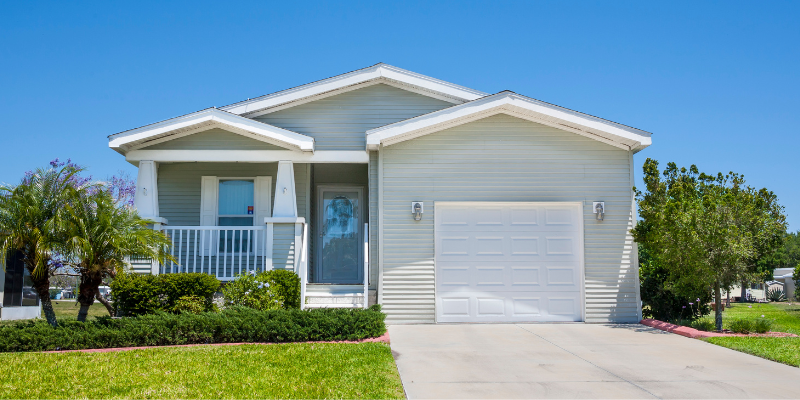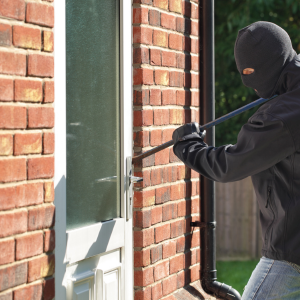
Understanding City Regulations on Vacant Properties in Minneapolis
Most Minneapolis homeowners follow property laws related to neglect to avoid issues or penalties. In this sense, a particular municipality has local ordinances concerning the maintenance and registration of blighted buildings to curb the declining standards of neighborhoods and encourage investment in real estate.
Homeowners are required to register and renew their contact information and pay a fee to the city’s Department of Regulatory Services annually for their vacant properties. Vacant properties also have to have a minimum level of maintenance, which includes shutting all windows and doors, keeping the outside of the property free from junk, and mowing the lawn. These actions are done to curb nuisances.
If not followed, these policies may result in penalties from the city. Knowing these policies is essential as they help homeowners understand their obligations and, in turn, shape the community in a positive direction. K&G Investments can guide you through these local regulations to help you stay compliant and avoid unnecessary fines
Can I Leave My House Vacant?
Understanding the rules and glaring safety issues in the community is essential when leaving a property unattended. Minneapolis has a legal framework known as the Vacant Building Registration system, which necessitates registration of vacant structures that sit idle for extended periods.
Such registration enables more vigilant monitoring of a city’s assets and drastically reduces the likelihood of such properties turning into dangerous places. Moreover, homeowners must meet the maintenance provisions of the city’s housing code. Still, they are not limited to mowing grass, snow removal, and boarding windows and doors to prevent unauthorized access.
Not abiding by these policies can result in fines or financial penalties. Moreover, some insurers have specialized provisions for unoccupied properties, which might require homeowners to take out policies for vacant properties.
Minneapolis’ law guiding a vacant house policy provides guidelines for a homeowner’s behavior regarding a property and aims to avoid conflicts at a community level. When observed, these guidelines positively impact legal matters and neighborhood stability.
Pros and Cons of Leaving Your House Vacant in Minneapolis, Minnesota
Leaving your house vacant in Minneapolis, Minnesota, for an extended period, like a year, can have advantages and disadvantages. On the positive side, maintaining a vacant property can offer flexibility regarding future relocation or real estate investment opportunities.
It allows time for renovations or upgrades without the hassle of living amidst construction. However, there are notable downsides to consider.
A vacant house in Minneapolis is at increased risk for vandalism, theft, and potential damage from harsh weather conditions common to Minnesota winters. Additionally, insurance premiums may rise as insurers often view unoccupied homes as higher risk.
The property might also lose value due to neglect or lack of maintenance over time. Furthermore, prolonged vacancy could result in challenges with utilities and plumbing systems if they aren’t regularly monitored and maintained.
Balancing these factors is crucial when deciding whether to leave your house unoccupied for an extended duration in Minneapolis.
How Long Can You Leave a House?
When considering how long you can leave a house vacant in Minneapolis, it is crucial to understand the various implications of such a decision. Leaving your property unoccupied for an extended period, such as a year, can lead to several challenges, including maintenance issues, security concerns, and potential legal ramifications.
In Minneapolis, city ordinances require homeowners to register vacant properties to prevent urban blight and ensure regular inspections. Without proper upkeep and monitoring, a vacant house may experience deterioration due to weather conditions or vandalism.
Additionally, insurance policies often have specific clauses regarding vacancy that could affect coverage if the house remains empty for too long. To mitigate these risks, homeowners should consider hiring property management services or arranging regular check-ins by trusted individuals.
Understanding these factors is essential for anyone contemplating leaving their house vacant in Minneapolis for an extended duration. Contact us today for personalized guidance and support.
Preparing Your Minneapolis Home for Extended Vacancy
Adhering to local regulations and ensuring the property remains secure and well-maintained are crucial when preparing your Minneapolis home for an extended vacancy. Start by notifying the city if your home will be vacant for a prolonged period, as Minneapolis requires homeowners to register vacant properties.
This registration helps the city monitor and manage unoccupied homes, reducing potential issues like vandalism or squatting. Security measures such as installing motion-sensor lights and alarm systems should also be considered to deter unauthorized access.
Regular maintenance is also essential; lawn care, snow removal, and periodic inspections are needed to keep the property compliant with city ordinances and prevent it from appearing neglected. Ensure utilities are managed appropriately by shutting off non-essential services while maintaining necessary ones to avoid damage from frozen pipes during harsh winters.
Please update your contact information with local authorities so they can reach you in case of any emergencies or issues requiring immediate attention. Taking these steps, you help protect your investment and contribute positively to neighborhood safety even when you’re not residing in your Minneapolis home.
Legal Requirements for Leaving Your House Vacant in Minnesota

Minnesota homeowners considering leaving their houses vacant must navigate various legal requirements to ensure compliance with state and local regulations. In Minneapolis, these requirements are particularly stringent and involve obtaining a Vacant Building Registration from the city.
This registration is mandatory for any property that has been unoccupied for more than 30 days. To maintain an active registration status, homeowners must submit detailed information about the property and pay associated fees.
Additionally, it is crucial to ensure that the vacant property adheres to local safety standards, which include maintaining functional smoke detectors, securing all windows and doors, and keeping the exterior free of debris or hazards. Failure to comply with these regulations can result in fines or penalties, making it essential for homeowners to stay informed about their responsibilities under Minnesota’s housing codes.
City officials may also regularly inspect homes to verify compliance with maintenance standards. Understanding these legal obligations helps homeowners avoid potential legal issues while maintaining their properties responsibly during extended vacancies.
Managing Utilities for a Vacant Property in Minnesota
When managing utilities for a vacant property in Minneapolis, Minnesota, it’s crucial to ensure that all services are properly maintained to prevent potential issues. Keeping the heating system operational is essential during the harsh Minnesota winters to avoid frozen pipes, which can lead to expensive repairs.
It’s advisable to set the thermostat at a minimum temperature recommended by experts, usually around 55 degrees Fahrenheit. Additionally, regularly checking on water systems and ensuring that plumbing is winterized can help mitigate risks associated with vacancy.
Homeowners should also manage electricity usage by unplugging non-essential appliances and consider using timers for lights as a security measure. Arranging for regular inspections or enlisting the help of a property management service can ensure that utilities are monitored effectively.
Furthermore, informing utility companies about the property’s status may offer options like special rates or temporary suspension of services without penalties. Such proactive measures safeguard your investment, comply with local regulations regarding vacant properties in Minneapolis, and make it easier to sell your home in Minneapolis and other Minnesota cities.”
Strategies to Prevent Mold and Moisture Damage in Empty Houses
Here are the strategies to prevent mold and moisture damage in an empty house in Minneapolis, Minnesota:
- Maintain Proper Ventilation and Humidity Control
– Keep air circulating and use dehumidifiers to maintain indoor humidity below 60%, reducing the chance of mold growth. - Clear Gutters and Downspouts
– Ensure gutters and downspouts are debris-free and direct water away from the foundation to prevent seepage into basements or crawl spaces. - Inspect for Leaks
– Check plumbing systems and roofs regularly for leaks, as even small drips can lead to significant mold problems over time. - Seal Windows and Doors
– Properly seal windows and doors to prevent outside moisture from entering the home. - Monitor for Condensation
– Periodically inspect windows and walls for signs of condensation, which may indicate high humidity or poor insulation. - Use Smart Home Technology
– Install remote sensors to detect leaks or monitor humidity changes. This will allow prompt action even when the house is unoccupied. - Perform Regular Maintenance Checks
– Schedule routine visits to inspect and maintain the property, especially after storms or extreme weather.
Security Measures for Unoccupied Homes in Minneapolis

When leaving a house vacant in Minneapolis, homeowners must prioritize security measures to comply with local regulations and protect their property. Ensuring your unoccupied home is secure involves installing robust locks on all doors and windows to deter potential intruders.
Motion-activated lighting systems are highly recommended. They illuminate the property when movement is detected, adding an extra layer of security. Homeowners should also consider investing in a reliable alarm system that can alert authorities in case of unauthorized access.
Surveillance cameras around the exterior can provide valuable footage and deter criminal activity. Additionally, maintaining regular appearances at the property, such as hiring someone to mow the lawn or collect mail, can give the impression that the house is still occupied, which helps prevent it from becoming a target for break-ins or vandalism.
Adhering to these security practices aligns with Minneapolis regulations and offers peace of mind while ensuring your vacant home remains safe and secure.
Protecting Your Home From Vandalism During Vacancy
When a home in Minneapolis is left vacant, protecting it from vandalism becomes a crucial concern for homeowners. To safeguard your property, it’s essential to implement security measures that deter potential vandals.
Installing robust locks on all doors and windows can prevent unauthorized access, while an alarm system protects against break-ins. Motion sensor lights around the house’s exterior effectively deter intruders by illuminating suspicious activity.
Regularly checking on the property or hiring a reliable management service can help identify any signs of vandalism early and ensure prompt repairs. Maintaining the home’s exterior by keeping lawns mowed and removing any accumulated mail or newspapers makes the property appear occupied, further discouraging vandals.
Engaging with neighbors and informing them about your absence can also be beneficial. They can watch for unusual activity and notify authorities if necessary. By taking these proactive steps, homeowners can significantly reduce the risk of vandalism when their house is unoccupied in Minneapolis.
Innovative Technologies to Monitor and Secure Empty Properties
Innovative technologies have become indispensable for homeowners looking to comply with local regulations and protect their investments in safeguarding vacant properties in Minneapolis. Smart home security systems offer real-time monitoring capabilities, enabling owners to monitor their unoccupied houses worldwide via smartphone apps.
These systems often include motion detectors, smart locks, and surveillance cameras that provide instant alerts of suspicious activity or unauthorized entry. Additionally, remote-controlled lighting systems can simulate occupancy by turning lights on and off at random intervals, deterring potential intruders.
Environmental sensors are also crucial as they detect water leaks, temperature fluctuations, and other anomalies that could lead to property damage if left unchecked. Homeowners can leverage these technologies to enhance security and ensure compliance with local ordinances that may impose strict measures on maintaining uninhabited residences.
Property owners can efficiently manage their vacant homes by integrating these solutions while meeting the city’s regulatory standards.
Risks of Long-term Vacancy for Residential Properties in Minnesota

Leaving a residential property vacant for an extended period in Minneapolis can pose several risks that homeowners need to understand. One primary concern is the potential for vandalism or theft, as unoccupied homes often become targets for criminal activity.
Additionally, long-term vacancy can lead to significant maintenance issues; without regular upkeep, properties may suffer from problems such as water damage, mold growth, and pest infestations. Once these issues are addressed, they diminish the home’s value and increase the cost of repairs.
Moreover, vacant properties are subject to specific regulations under Minneapolis city ordinances. These ordinances require owners to register their properties if they remain empty for a particular period. Failure to comply with these regulations can result in fines and legal complications.
Furthermore, insurance policies on vacant homes typically offer limited coverage compared to occupied residences, leaving homeowners financially vulnerable in the event of damage or liability claims. Understanding these risks is crucial for any property owner considering leaving their house unoccupied in Minnesota’s dynamic real estate environment.
Insurance Implications of a Vacant Home in Minneapolis
When a homeowner in Minneapolis decides to leave their property vacant, it is crucial to understand the insurance implications of maintaining an unoccupied home. Insurance policies typically differ for vacant homes compared to occupied residences due to increased risks such as vandalism, theft, and weather-related damage.
Many standard homeowners’ insurance policies do not cover properties that are left vacant for extended periods, often defined as more than 30 or 60 days. As a result, homeowners must notify their insurance provider about the change in occupancy status and potentially acquire a specialized vacant home insurance policy.
This coverage type protects against the unique risks associated with an uninhabited property. Minneapolis homeowners should review their existing insurance terms carefully and ensure they have adequate protection during the vacancy period to avoid any potential gaps in coverage.
Additionally, some insurers may require specific security measures or maintenance routines to be upheld while the house remains unoccupied to mitigate risks and maintain coverage validity. Understanding these requirements and obtaining appropriate insurance can provide peace of mind and financial protection when a home is vacant in Minneapolis.
How Much Is the Vacant Building Fee in Minneapolis?
Understanding the vacant building fee is crucial for homeowners who intend to leave their properties unoccupied in Minneapolis. The city has established a vacant building registration program to maintain neighborhood stability and safety.
Homeowners must register their vacant properties and pay an annual vacant building fee, which varies depending on the property’s classification. The fees are generally structured to address different vacancy categories and range from several hundred to over a thousand dollars annually.
Homeowners must check the current fee schedule set by the City of Minneapolis, as rates are subject to change based on city ordinances and budgetary needs. Failure to register a vacant property or pay the required fees can result in fines or legal action. In some cases, selling to cash home buyers in Bloomington and surrounding cities in Minnesota may be a practical solution to avoid ongoing fees and legal complications.
Thus, staying informed about these regulations helps homeowners avoid penalties while contributing to community well-being.
Tax Implications of Owning a Vacant Property in Minnesota
Owning a vacant property in Minneapolis or anywhere in Minnesota has specific tax implications that homeowners need to understand. In Minnesota, property taxes are based on the property’s assessed value, which can influence its occupancy status.
Due to potential changes in classification, vacant properties may be subject to different tax rates than occupied homes. Additionally, local regulations might impose vacancy taxes designed to encourage the use of properties and mitigate urban blight.
Homeowners should know that leaving a house vacant could result in higher financial responsibilities, as municipalities might enforce penalties or additional fees for unoccupied structures. Property owners must stay informed about these tax policies and potential exemptions available under certain conditions, such as renovations or plans for future occupancy, which could affect their overall tax liability.
Consulting with a tax professional who understands Minnesota’s property tax laws can help navigate these complexities and ensure compliance while potentially reducing financial burdens associated with owning a vacant home.
Seasonal Considerations for Vacant Homes in Cold Climates
When leaving your house vacant in Minneapolis, especially during the harsh winter months, it is crucial to consider seasonal factors to prevent damage and comply with local regulations. Cold climates pose unique challenges for vacant homes, such as frozen pipes and increased risk of property damage due to snow accumulation.
Homeowners must ensure that their heating systems are adequately maintained to prevent plumbing issues caused by freezing temperatures. Local guidelines recommend setting the thermostat at a minimum temperature to protect the interior infrastructure.
Securing the property’s exterior from heavy snowfall involves regular roof inspections and gutter cleanings to avoid ice dam formation. Monitoring security systems becomes even more critical during winter when daylight hours are shorter, making properties more vulnerable to break-ins.
Homeowners should also be aware of city ordinances regarding snow removal from sidewalks and driveways, as failure to comply may result in fines. Regular checks or hiring a property management service can help ensure the home remains safe and compliant with Minneapolis regulations throughout its vacancy in cold conditions.
Do you need to sell your home? Sell quickly, avoid costly repairs, or prefer a hassle-free sale. K&G Investments is here to help. We offer fair cash offers, handle all the details, and make the process seamless. Ready to sell or have questions? Call us at (612) 400-8070 for a no-obligation offer. Get started today!
| SQUATTER | TENANTS | PERIODIC TENANCIES | LEASES | PERIODIC TENANCY | TENANCY |
| LEASED | LEASE AGREEMENT | TENANCIES | LANDLORDS | RENTAL PROPERTY | RENTING |
| EVICTION | EVICT | UNLAWFUL DETAINER | NOTICE TO QUIT | EVICTING | COURT |
| PAYMENTS | PREMISES | ACTUAL DAMAGES | PUNITIVE DAMAGES | POLICE | CONTRACT FOR DEED |
| FORECLOSED | DEED | CONTRACT | CRIMINAL TRESPASSING | TRESPASSING | MORTGAGE |
| MONEY | LAW ENFORCEMENT |
Helpful Minneapolis Blogs Articles
- Selling A House As-is In Minneapolis, Minnesota
- Documents For Selling Your Home In Minneapolis, Minnesota
- Homeowners Insurance When Selling a House in Minneapolis, MN
- Executor Authority in Selling Property In Minneapolis, MN
- Sell A Tenant-occupied Property In Minneapolis, MN
- Selling a House with Title Problems in Minneapolis, MN
- Sell Your House Below Market Value In Minneapolis, MN
- Selling Your Fixer-upper Home In Minneapolis, MN
- HOA Foreclosure Risks In Minneapolis, Minnesota
- Selling An Inherited House In Minneapolis, Minnesota
- Minneapolis, MN Regulations For Leaving A House Vacant
- Paperwork For Selling House By Owner In Minneapolis, MN

